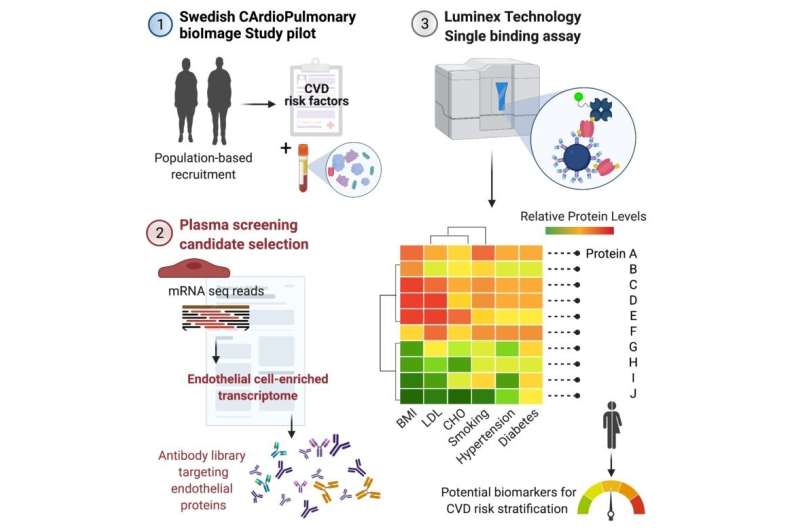
Endothelial cell dysfunction is a well-established response to cardiovascular disease risk factors, such as smoking and obesity. A new study from Karolinska Institutet show that an individual’s cardiovascular disease risk was linked to the levels of endothelial proteins found in the blood. The study was recently published in Arteriosclerosis, Thrombosis, and Vascular Biology.
The endothelium is the layer of cells that line the inside of the blood vessels. Endothelial cells are key for vascular health as they regulate blood clotting, inflammation and the transport of molecules and nutrients to and from the blood stream. Endothelial cells can become dysfunctional when exposed to cardiovascular disease risk factors, such as smoking, high body mass index or cholesterol in the blood.
“Endothelial dysfunction can lead to the development of cardiovascular disease,” explains the study’s corresponding author Lynn Butler, Assistant Professor at the Department of Molecular Medicine and Surgery, Karolinska Institutet. The study was performed by Maria Jesus Iglesias, senior researcher at KTH/SciLifeLab, and was conducted together with researchers from Norway, Germany and Ireland.
“In a previous study, we identified proteins that are expressed at higher levels in endothelial cells, compared to other cell types in the body. Endothelial proteins can be secreted into, or leak into, the blood. Here, we aimed to determine if levels of these proteins in blood could reflect endothelial dysfunction, and if they could be useful to determine individual risk for cardiovascular disease,” says Lynn Butler.
We measured relative levels of 216 endothelial proteins in the blood of male and female healthy participants, between the ages of 50–64 (total samples 1005) who volunteered to participate in the Swedish CArdioPulmonary bioImage Study (SCAPIS) pilot study. 38 of these proteins were associated with the CVD risk factors body mass index, total cholesterol, low density lipoprotein, smoking, hypertension, or diabetes.
Could be the first step in the development of a blood test for routine screening
Source: Read Full Article